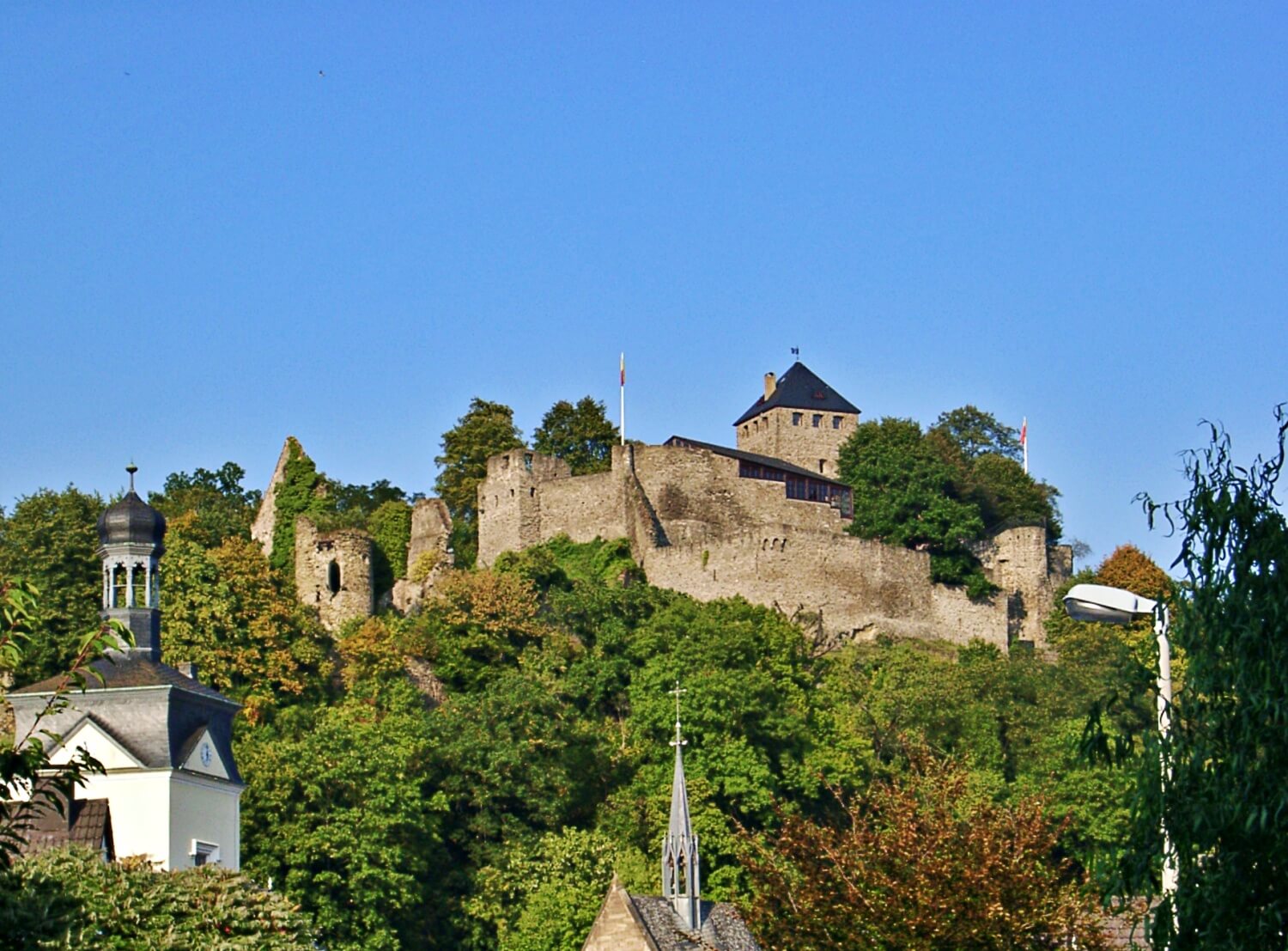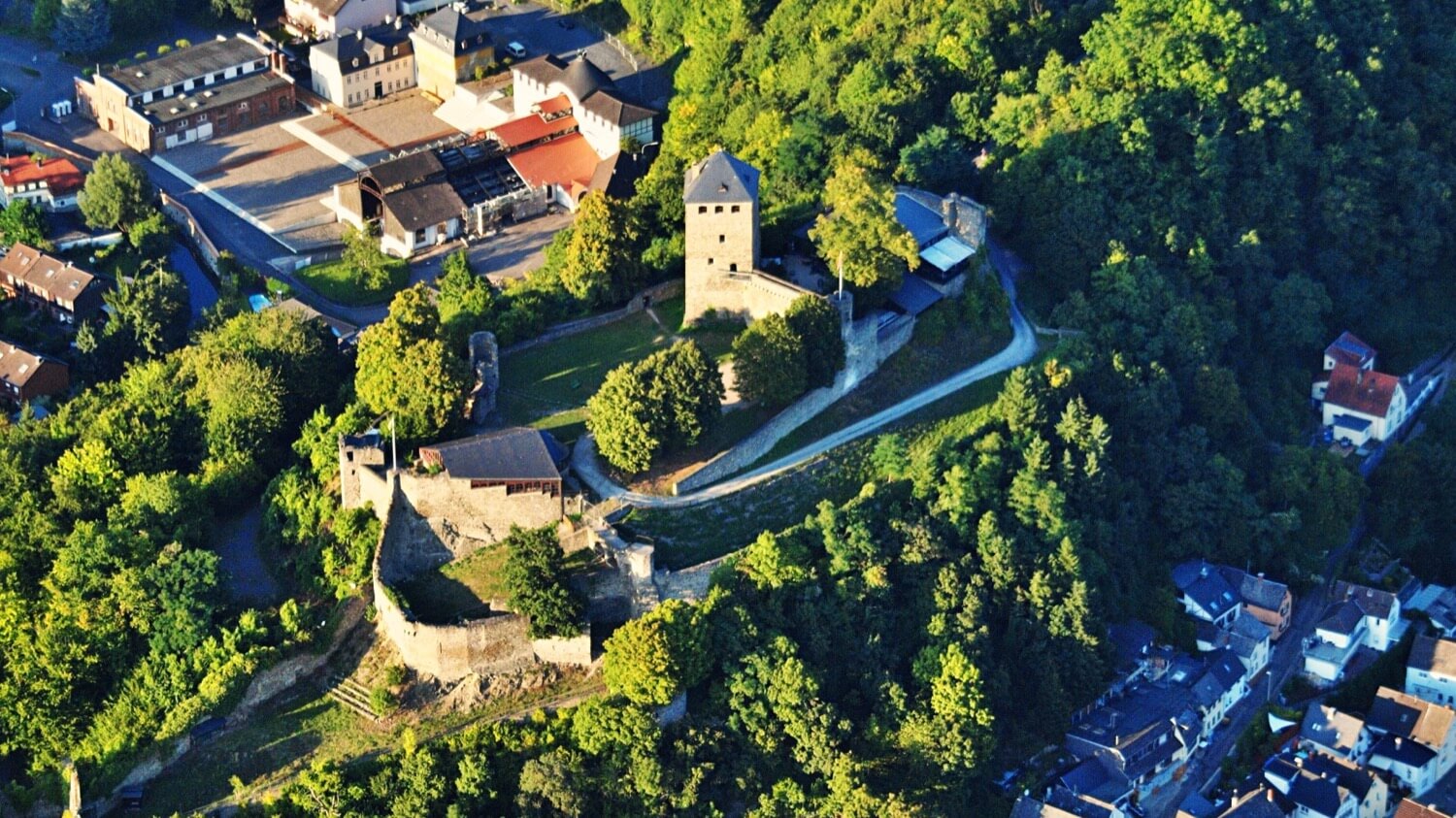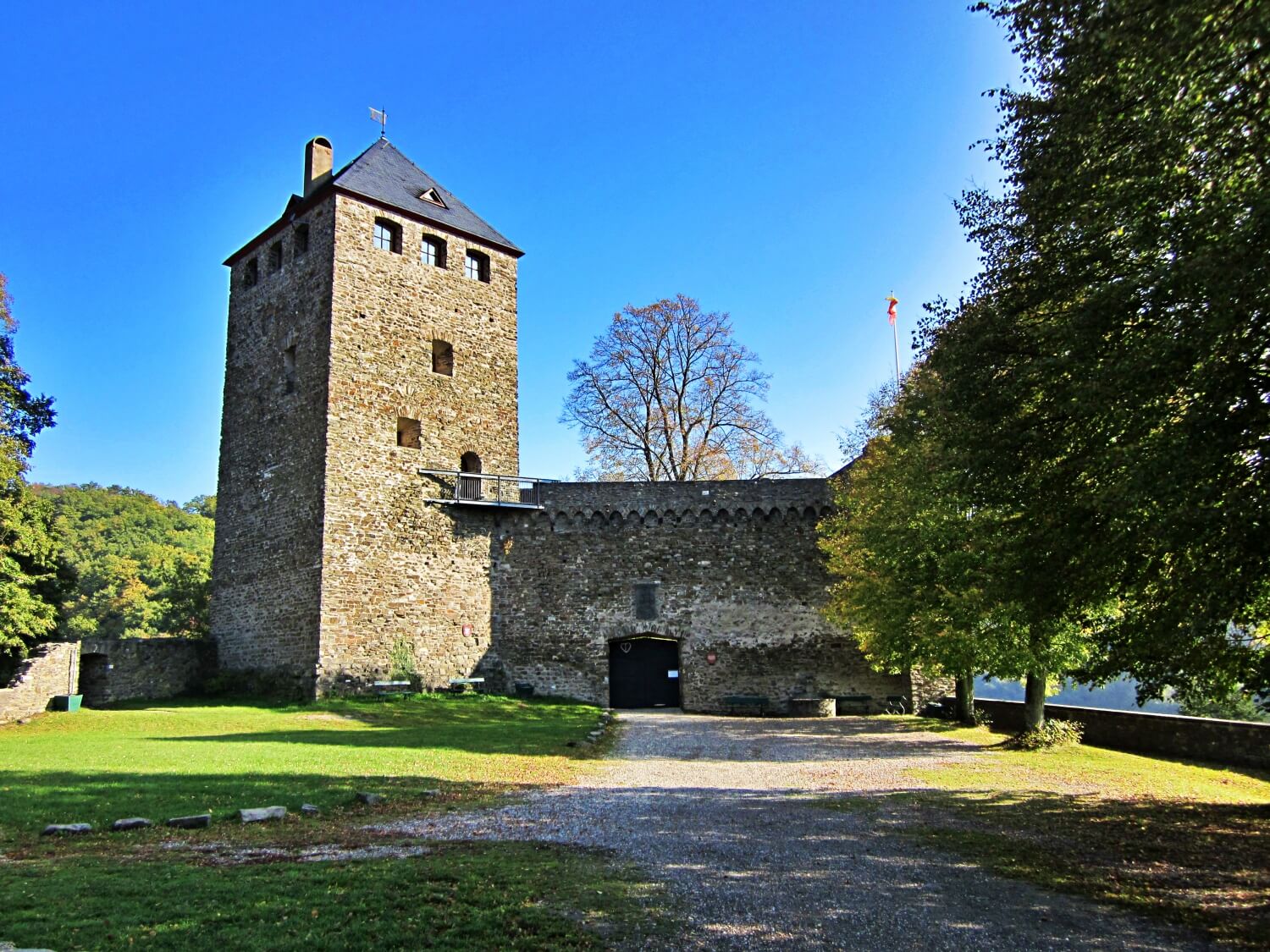Burg Sayn
Mayen-Koblenz Rheinland-Pfalz Germany
castle, chateau
Burg Sayn
Mayen-Koblenz Rheinland-Pfalz Germany
castle, chateau
The ruins of Sayn Castle (German: Burg Sayn), the 12th century family castle of the counts of Sayn and Sayn-Wittgenstein, are in Sayn, part of the borough of Bendorf on the Rhine, between Koblenz and Neuwied in the county of Mayen-Koblenz in the German state of Rhineland-Palatinate
Die Ruine der Burg Sayn, der im 12
Previous names
Burg Sayn, Burg Sayn
Description
The ruins of Sayn Castle (German: Burg Sayn), the 12th century family castle of the counts of Sayn and Sayn-Wittgenstein, are in Sayn, part of the borough of Bendorf on the Rhine, between Koblenz and Neuwied in the county of Mayen-Koblenz in the German state of Rhineland-Palatinate.
Description
Whilst the southern, western and northern flanks of Sayn drop steeply into the valley, the flat hill ridge on the eastern side, from where the castle is accessed, is protected by a deep and wide artificial neck ditch. In order to provide additional protection a mighty shield wall with a wall walk was built above the moat. In the northeastern area of the site stands a well preserved, roughly 20-metre-high bergfried, which dominates the appearance of Sayn Castle. The construction period of the bergfried, whose walls are 2.4 metres thick in the middle, dates to the late 12th century. A wall running south from the bergfried, also guarded by an allure, divides the inner bailey into two courtyards.
Excavations in recent times have revealed that the palas originally stood on the south side of the smaller eastern courtyard, but was later moved to the western spur of the site. Today nothing is left apart from a 25-metre-deep castle well and an octagonal staircase tower. These excavations also uncovered the foundation walls of a castle chapel at the southwestern corner in the form of a simultaneum with three apses and its well preserved, ornately decorated floor dating to about 1200.
In front of the southern enceinte is a 90-metre-long and 20-metre-wide zwinger, guarded to the east by a small defensive tower and to the west by a barbican. Here there is also a smaller gateway zwinger and, further down the hillside, the Mittlere Burghaus ("Middle Castle House"), which is joined to the inner ward by a wall. The excavations, carried out by the State Conservation Department, also exposed the original access track to the inner ward along the southern flank through the gate zwinger, which may now be used again.
Die Ruine der Burg Sayn, der im 12. Jahrhundert erbauten Stammburg der Grafen von Sayn bzw. Sayn-Wittgenstein, liegt im Stadtteil Sayn von Bendorf am Rhein zwischen Koblenz und Neuwied im Landkreis Mayen-Koblenz in Rheinland-Pfalz.
Geschichte
Erstmals im 10. Jahrhundert wurden die Grafen von Sayn im Zusammenhang mit dem Pfalzgrafen im Auelgau, dessen Untergrafen sie vermutlich waren, urkundlich erwähnt. Heinrich I. und sein Bruder Eberhard I. von Sayn, die auf der Alten Burg, auch Eselsburg genannt, residierten, sollen zwischen 1139 und 1150 die Grafschaft Bonn durch Heirat erworben haben. Dies führte zu heftigen Auseinandersetzungen mit dem Erzbistum Köln, in deren Verlauf 1152 ihre Burg zumindest teilweise zerstört wurde, sodass sie sich auf die Burg Blankenberg (Sieg) zurückzogen.
Mit dem Bau einer neuen Burg auf dem Westsporn des Kehrbergs begann man unmittelbar danach. Graf Heinrich III. (der Große) von Sayn und seine Gemahlin Mechthild von Meißen-Landsberg regierten in der ersten Hälfte des 13. Jahrhunderts von der neuen Burg aus eine sich von der Lahn bis in den Köln-Bonner Raum erstreckende Grafschaft mit Besitzungen an der mittleren Mosel und im Westerwald. Heinrich III. starb 1247 kinderlos.
Burg Sayn mitsamt Grafschaft fielen an den Grafen Johann I. von Sponheim, den Sohn seiner Schwester Adelheid, dessen Nachfahren sich wiederum Grafen von Sayn nannten. Diese regierten die Grafschaft von ihren Westerwald-Residenzen in Sayn, Hachenburg, Altenkirchen und Friedewald aus. 1345 gelangte durch Einheirat die Grafschaft Wittgenstein ebenfalls zu Sayn. Diese Linie nannte sich dann ab 1361 Sayn-Wittgenstein.
1606 starb Heinrich IV. von Sayn, ohne einen männlichen Nachfolger zu hinterlassen. Die Burg Sayn wurde nur wenige Jahre später 1632 während des Dreißigjährigen Kriegs von den Schweden zerstört. Die nunmehr unbewohnbare Ruine kam 1652 zusammen mit dem Amt Sayn, zu dem die Orte Sayn, Mülhofen und Stromberg gehörten, an das Kurfürstentum Trier, bei dem es bis zum Beginn des 19. Jahrhunderts blieb.
Fürst Friedrich Wilhelm von Nassau-Weilburg, der mit der Erbgräfin Luise Isabella von Sayn-Hachenburg verheiratet war, gelangte 1803 in den Besitz der Burgruine, um sie durch die Beschlüsse des Wiener Kongresses 1815 dann als Teil der Rheinprovinz an Preußen abtreten zu müssen.
Wieder in den Besitz der Sayner kamen Burgruine und Schloss 1848 durch eine Schenkung des preußischen Königs Friedrich Wilhelm IV. an den soeben mit hohen Auszeichnungen aus Russland zurückgekehrten Fürst Ludwig zu Sayn-Wittgenstein-Berleburg, der das Schloss umgehend neugotisch umbauen ließ, dort einzog und sich fortan zu Sayn-Wittgenstein-Sayn nannte. Die Burg Sayn bestand weiterhin als Ruine, deren Baubestand in den Jahren 1981 bis 1987 unter dem heutigen Besitzer Alexander Fürst zu Sayn-Wittgenstein-Sayn gesichert und teilausgebaut wurde.
Nutzung
Im Rahmen der 1981–1987 durchgeführten Restaurierungsarbeiten wurde auch ein die gesamte Anlage umfassender Wildpark angelegt und mit Rot-, Dam- und Muffelwild bestückt. Die Tiere sollten vor allem ein erneutes Zuwachsen der Anlage verhindern. Der Wildpark wurde nach einigen Jahren wieder aufgegeben, lediglich die Falknerei wird saisonal noch betrieben. Auf dem halben Weg zwischen dem Schloss und der oberhalb gelegenen Kernburg fanden bis 2009 Flugvorführungen der Falknerei Burg Sayn statt.
Aus touristischen Gründen wurde 1986–1987 eine Burgschänke zwischen der Schildmauer und einer weiteren vorgelagerten Mauer errichtet. Ein alter Türdurchbruch und Konsolen für Deckenbalken ließen erkennen, dass dort auch früher ein Gebäude gestanden hat. Das Restaurant DieSayn Burg, ein Neubau mit Terrasse und einem darunter liegenden alten Gewölbekeller, versteckt sich weitgehend hinter den vorhandenen Ruinenteilen und dominiert dadurch nicht das Erscheinungsbild der Gesamtanlage.
Auch den Bergfried führte man, nachdem er restauriert und mit einer neuen Dachhaube versehen war, 1987 einer neuen Nutzung zu. In den oberen Stockwerken wurden zwei Ferienwohnungen eingerichtet.
Useful information
Gratis
Gratis
- Informationstafeln
- Aussichtsplatform
- Ruinen der Burg
- Räume zu vermieten
-
External links
Nearby castles
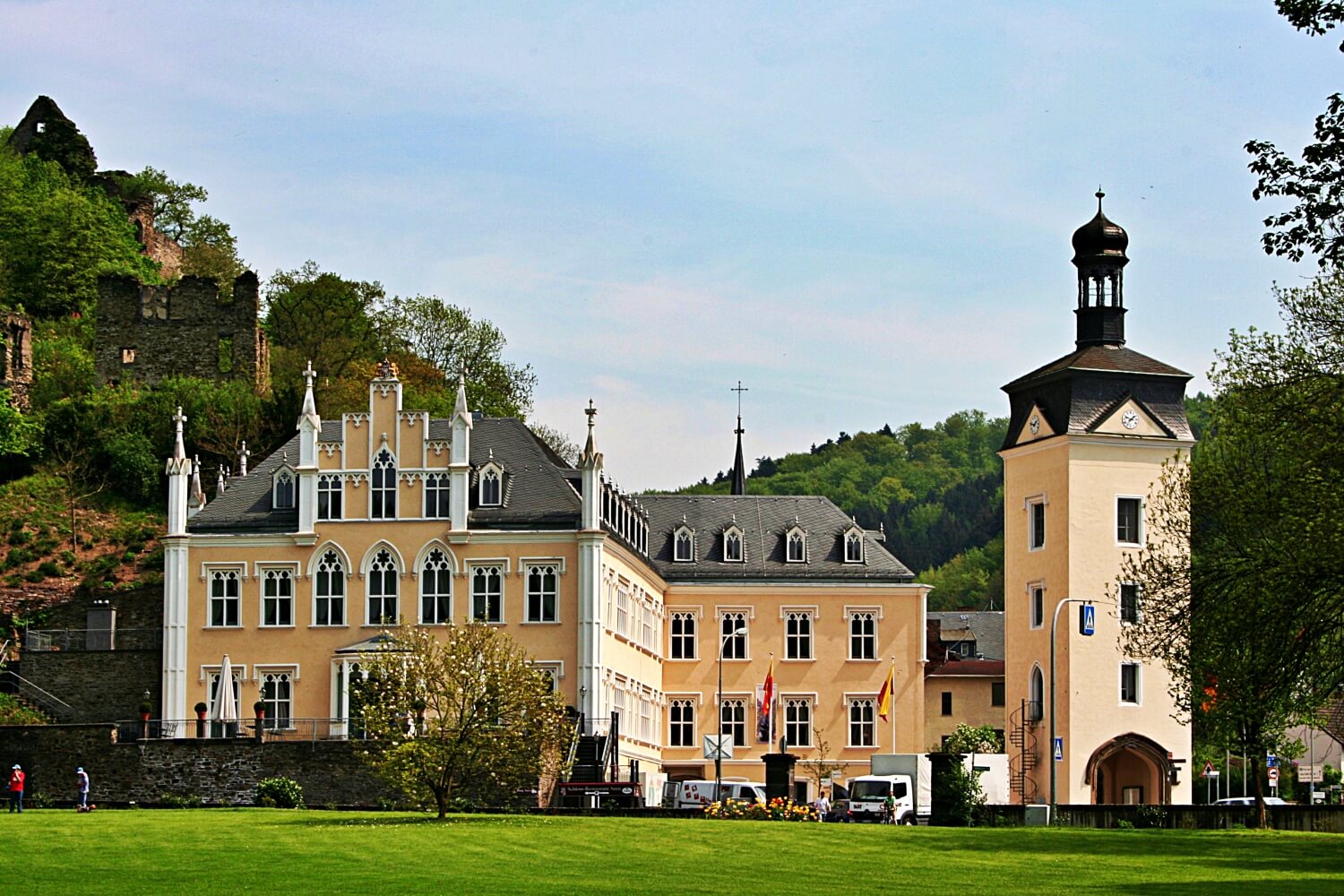
Sayin Palace
Mayen-Koblenz
0.2km
manor, mansion

Schloss Engers
Neuwied
3.1km
castle, chateau

Isenburg (Stammburg)
Neuwied
4.2km
castle, chateau

Grenzau Castle
Westerwaldkreis
5.5km
castle, chateau

Feste Kaiser Franz
Kreisfreie Stadt Koblenz
7.7km
castle, chateau
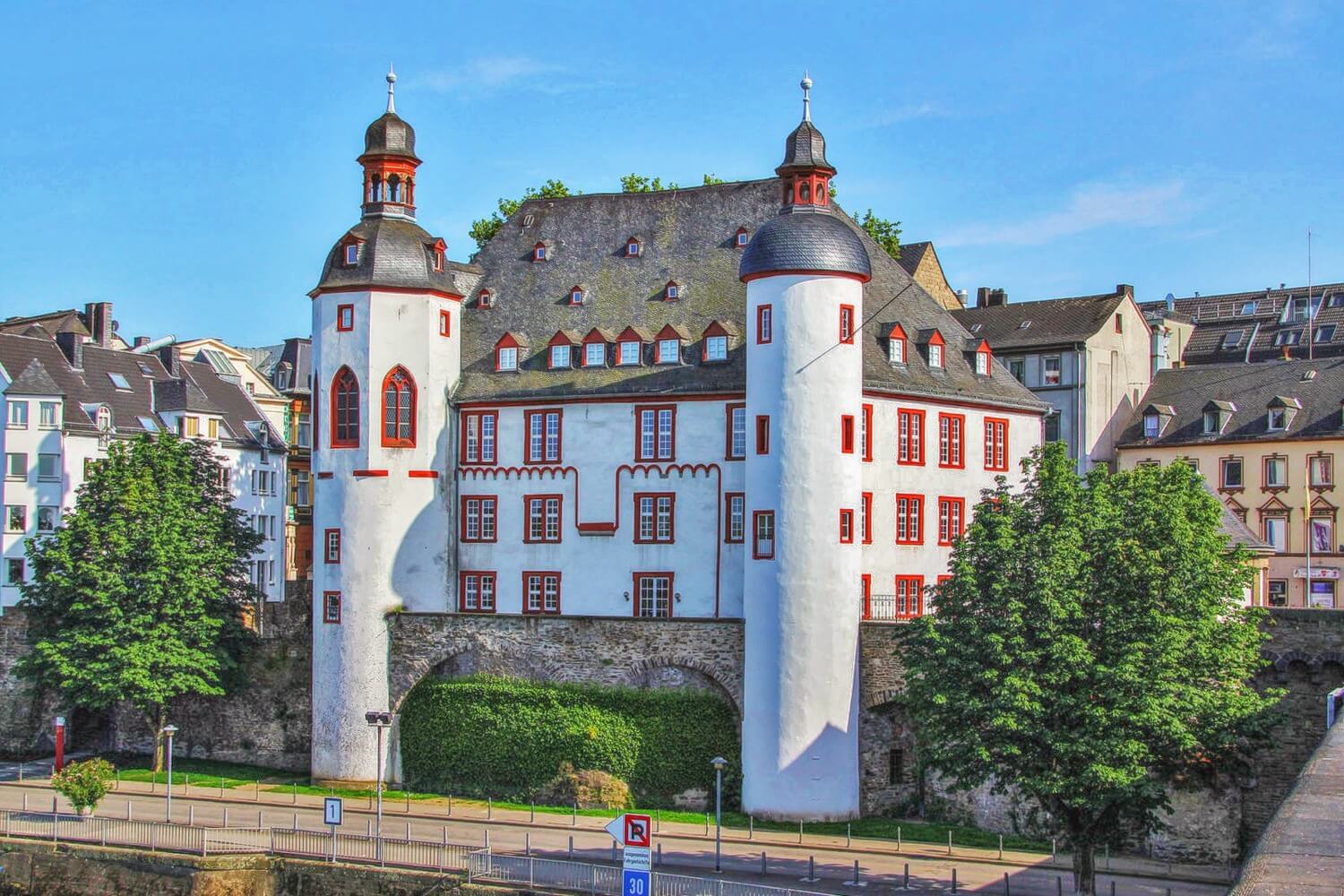
Old Castle (Koblenz)
Kreisfreie Stadt Koblenz
8.6km
castle, chateau
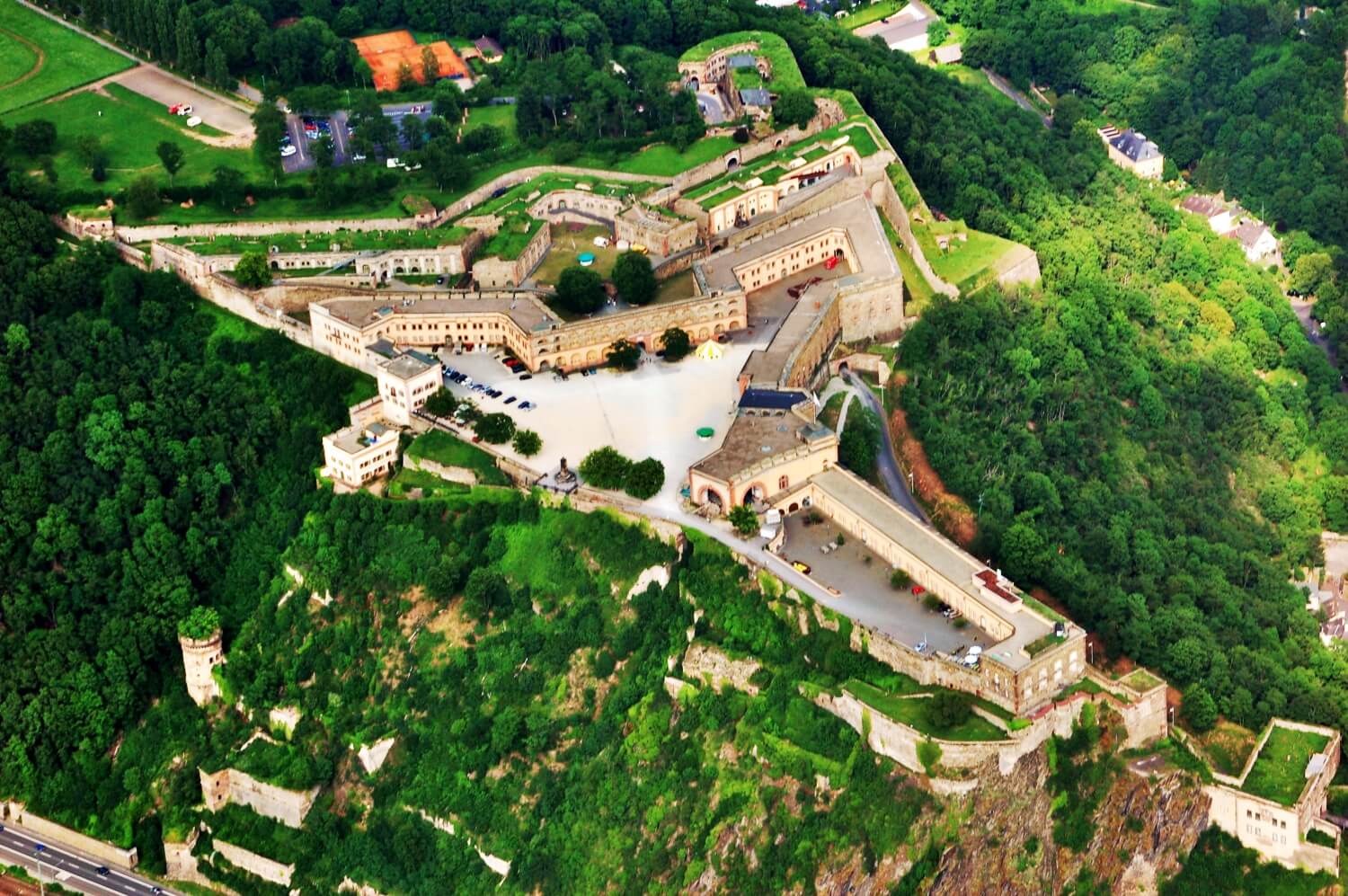
Festung Ehrenbreitstein
Kreisfreie Stadt Koblenz
8.6km
castle, chateau
